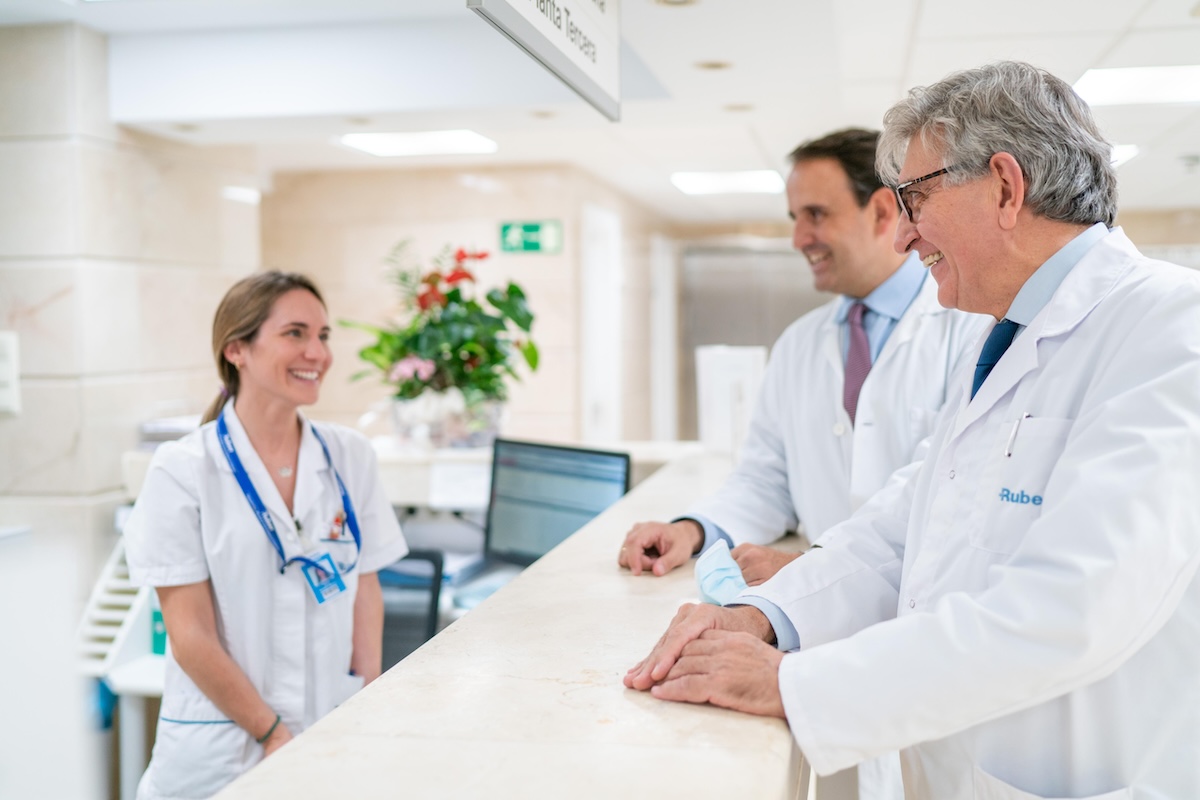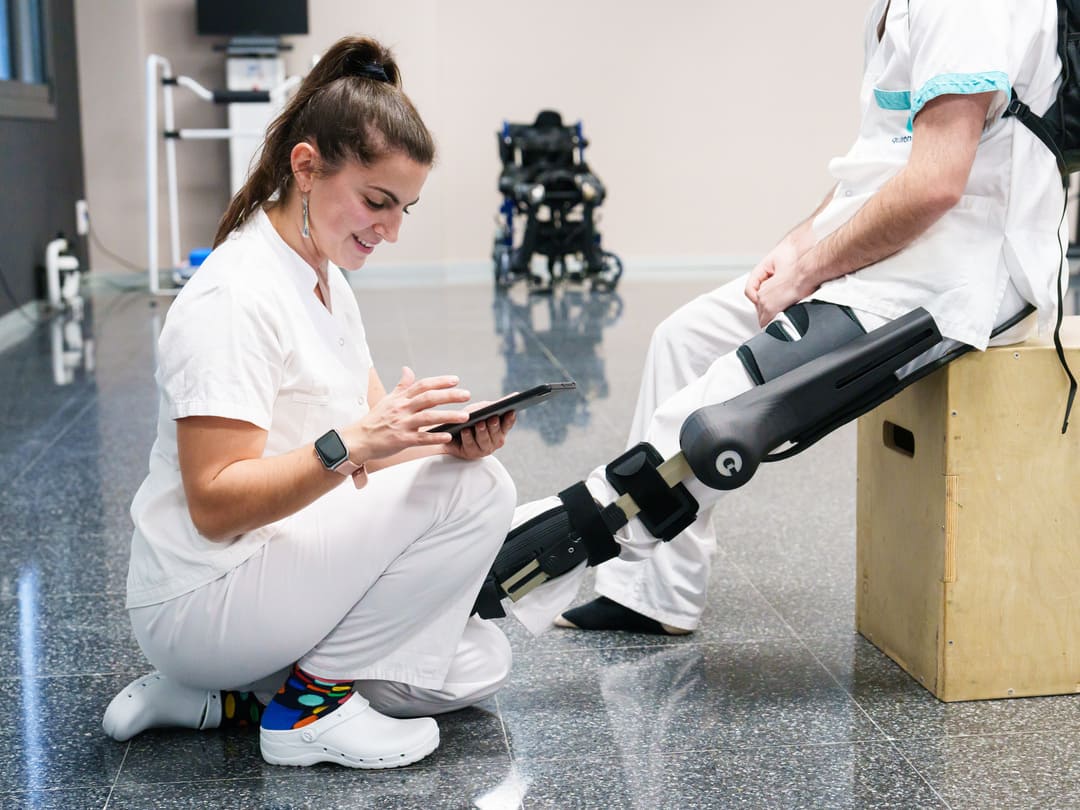Ruber Internacional Hospital incorporates robotic techniques and innovative devices for the treatment of benign prostatic hyperplasia (BPH).

Benign prostatic hyperplasia (BPH) is a common condition in men over the age of 50, characterised by benign growth of the prostate gland. Although it is not cancer, it can cause very uncomfortable urinary symptoms, such as difficulty starting to urinate, urgency or the need to get up several times during the night.
The diagnostic approach combines a detailed medical history, physical examination, PSA analysis, urological ultrasound and flowmetry, sometimes supplemented by advanced imaging tests such as magnetic resonance imaging.
Initial treatment is usually pharmacological. In mild cases, lifestyle changes and active monitoring may be sufficient.
Ruber Internacional Hospital has strengthened its therapeutic offering for benign prostatic hyperplasia (BPH) by incorporating robotic techniques and new minimally invasive devices. This is an advance that allows specialists to offer safe and personalised alternatives, avoiding open surgery in most cases.
Dr Antonio Allona, head of the Urology Department at Ruber Internacional Hospital, explains that they have one of the most comprehensive treatment portfolios in Europe. In some patients, we use state-of-the-art lasers, which are particularly effective in large prostates or in men on anticoagulants. In other cases, we opt for outpatient techniques such as the use of water vapour or temporary implants that reshape the urethra and improve flow without the need for hospitalisation. We also have image-guided procedures that can preserve ejaculatory function in more than 90% of cases, and radiological techniques that reduce the size of the prostate, avoiding open surgery. In addition, the incorporation of robotics, through systems that combine ultrasound and precision ablation, offers us long-lasting and safe results."
For his part, Dr. Juan Ignacio Martínez-Salamanca, associate head of the hospital's Urology Service, emphasises that the important thing is that today we can offer alternatives tailored to each patient's profile. "Not everyone needs the same solution; some require minimally invasive surgery, while others can benefit from an outpatient procedure. Our goal is always to preserve quality of life and achieve a quick recovery."
Robotic innovation and the future
In more complex cases, the team of doctors Allona and Martínez-Salamanca uses robotic adenomectomy with multiport access and plans to incorporate the Single Port system, which will allow them to operate with a single incision.
‘The robotic approach gives us extraordinary precision, less bleeding and faster recovery. The Single Port will further reduce surgical aggression and improve aesthetic and functional recovery,’ adds Dr Allona.
In addition, the Urology Department is researching new avenues for the future, such as image-guided focal ablation, state-of-the-art implantable devices and personalised medicine strategies based on the patient's genetic profile.
‘Individualising treatment is essential. There is no single solution that works for everyone, but rather a range of options that must be adapted to each case,’ says Dr. Martínez-Salamanca.
Prevention and check-ups
Specialists emphasise the importance of regular prostate check-ups from the age of 50, or earlier in patients with a family history.
‘We encourage men to lose their fear: prostate check-ups are quick, painless and can prevent serious complications in the future,’ says Dr Allona.
Health Content
Health Content
- October 6, 2025
Ruber Internacional Hospital incorporates robotic techniques and innovative devices for the treatment...
The Urology Department offers new minimally invasive treatments that allow the prostate to be treated without open surgery and with faster recovery times.Hospital Ruber Internacionalen/health-centers/hospital-quironsalud-ruber-internacional - 2 de octubre de 2025
Exoesqueletos y nuevas tecnologías: avances en la rehabilitación de ictus, tumores cerebrales y lesiones...
“En el caso del Parkinson, actuamos sobre la rigidez, la movilidad y el equilibrio; en la esclerosis múltiple, reforzamos la fuerza y ayudamos a controlar la fatiga; y en la ...Hospital Quirónsalud Bizkaiaen/health-centers/hospital-quironsalud-bizkaiaMedicina Física y Rehabilitaciónen/specialities/medicina-fisica-rehabilitacion - 2 de octubre de 2025
Perimenopausia: comprender y cuidar esta etapa de transición
En esta fase, que puede durar años, se producen importantes fluctuaciones hormonalesHospital El Pilaren/health-centers/hospital-el-pilarGinecología y Obstetriciaen/specialities/ginecologia-obstetricia





